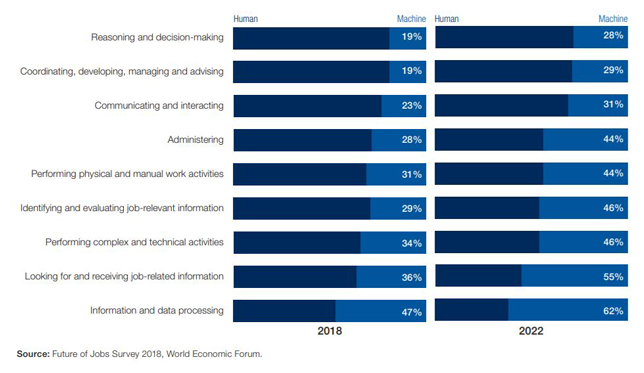
- Scenario 2 Part 1.2.2&your Digital Footprint Software
- Scenario 2 Part 1.2.2&your Digital Footprint System
1.2.2 If FAR subpart 12.6, Streamlined Procedures for Evaluation and Solicitation for Commercial Items, is used in conjunction with FAR part 15, Contracting by Negotiation, source selection procedures, and not FAR part 13, Simplified Acquisition Procedures, this document shall apply for actions greater than $10 million. Part 1: Configure, Apply and Verify an Extended Numbered ACL. Part 2: Reflection Questions. Background / Scenario. In this scenario, devices on one LAN are allowed to remotely access devices in another LAN using the Telnet protocol. Besides ICMP, all traffic from other networks is denied. Part 1: Configure, Apply and Verify an Extended Numbered ACL.
Deploy Lync Server 2010 in a Resource Forest Topology (Part 1)

The Lync system is normally running in the same forest of user accounts. However, in some situation, we have to put it in a resource forest. For example:
1. The account forest functional level is lower than Windows 2003. For example, Windows 2000, or windows 2000 mixed. Lync Server deployment requires Windows 2003 forest functional level.
2. There are multiple forests in your company and users in other forests wants to use your Lync server with SSO.
3. Due to some security consideration, you want to separate resources into different forests.

There is one Microsoft Technet document talking about it.
Deploying Lync Server 2010 in a Multiple Forest Environment
I am here to show a detail procedure and a real sample about how to do this.
Scenario 2 Part 1.2.2&your Digital Footprint Software
Some basic concepts first:
a. Account Forest | ||||||||||||||||||||
The forest hosts Users and Groups. | ||||||||||||||||||||
b. Resource Forest | ||||||||||||||||||||
In a resource forest topology, Lync Server 2010 is deployed in one forest, a resource forest that hosts servers running Lync Server 2010 but does not host any logon-enabled user accounts. Outside the resource forest, account forests host enabled user accounts but no servers running Lync Server 2010. Within the resource forest, a corresponding disabled user account exists for each user account in the user forests. | ||||||||||||||||||||
c. AD Attribute mapping | ||||||||||||||||||||
The resource forest hosts only enterprise application servers and does not contain any primary user accounts. The primary user accounts from other forests are represented as disabled user accounts. An ObjectSID of primary user account (from account forest) is mapped to corresponding disabled user account msRTCSIP-OriginatorSID attribute. These disabled user accounts are enabled for Lync Server 2010 service. If the account is also enabled for mail-enabled for Microsoft Exchange Server, the ObjectSID should already be copied to msExchMasterAccountSid attribute. So you can use a tool called LcsSync (sidmap.wsf ) to help you copy the ObjectSID value from the AD attribute (msExchMasterAccountSid) to the attribute (msRTCSIP-OriginatorSid) for every disabled user in the forest. | ||||||||||||||||||||
d. Trust between account forest and resource forest | ||||||||||||||||||||
1. It does not require the 2 forests to be the same functional level. For example, the account domain can be Windows 2000 mixed, the resource forest can be Windows 2008. So we might not be able to build a “Forest type” trust. So the “External type” of forest trust is best option to support this. Here is a list for trust type between forests.
2. Since we are going to use the msRTCSIP-OriginatorSid attribute of resource forest object to map the ObjectSID value of account forest object, we need to disable the “security identifier (SID) filter quarantining” on the forest trust. The netdom command is used to perform this job. Command to disable “curity identifier (SID) filter quarantining”. For example, the contoso forest (resource forest) TRUST the fabrikam forest (account forest), to disable the SID filtering on the trust: netdom trust contoso.com /domain:fabrikam.local /quarantine:No /userD:fabrikamadministrator /passwordD:* /userO:contosoadministrator /passwordO:* 3. If Lync server is in resource forest, Exchange server is in account forest, and if we need to enable Exchange Unified Messaging (UM) and other Lync Server to office integration scenarios, the msRTCSIP-PrimaryUserAddress has to be added to list of proxyAddresses in both Microsoft Exchange Server and Lync Server forests, and a two-way trust should be established between both forests. But if UM feature is not required, or Lync and Exchange are both in the resource forest, a one-way trust is good enough. |
Now let’s show the topology of the sample system. The following diagram shows how the organization Fabrikam has:
Scenario 2 Part 1.2.2&your Digital Footprint System
- Account forest: shanghai.fabrikam.local. All user accounts and groups, and Exchange mailboxes are in this forest. (Domain controller: DC01.shanghai.fabrikam.local.)
- Resource forest: Febres.com. The Lync server is running in the Febres.com. (Domain controller: DC02.Febres.com. Lync server: LyncSrv01.Febres.com)
- Email addresses: @Fabrikam.com, @Fabrikam.local
- SIP addresses are same email addresses.
- Assume the UM feature is not required here, so a one-way trust is built (FebRes.com trust Shanghai.Fabrikam.com).
- SID filtering is disabled on the trust.
- FIM 2010 is used to synchronize the required accounts to the resource forest as a disable account, and flow necessary attributes to them.
- Test clients: client01, client02
- No firewall is blocked between the 2 forests.